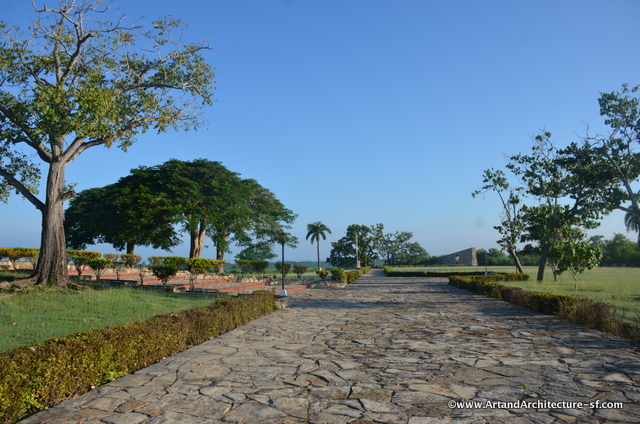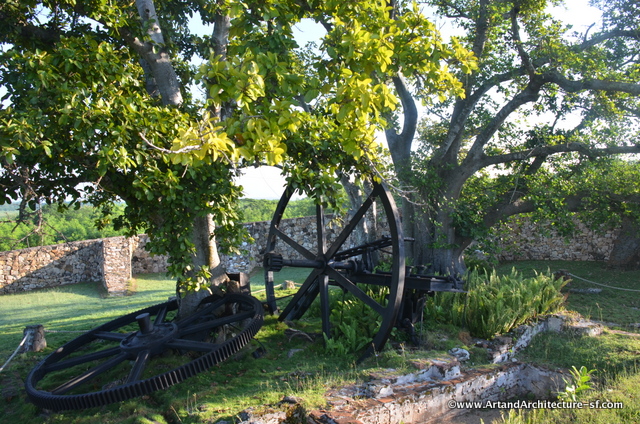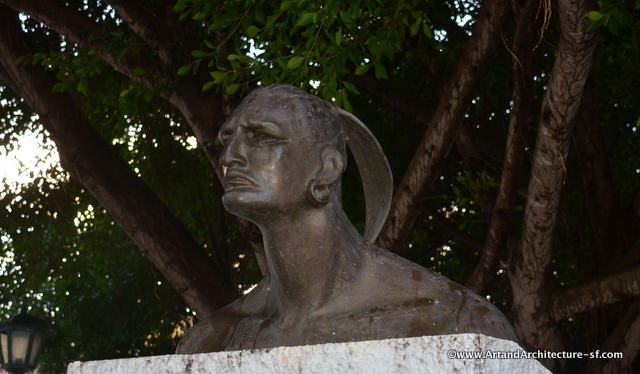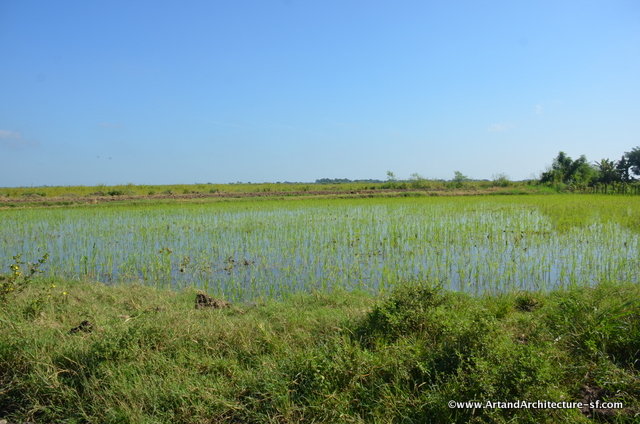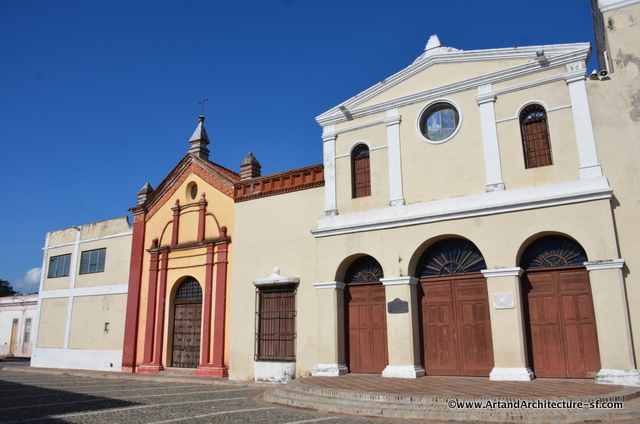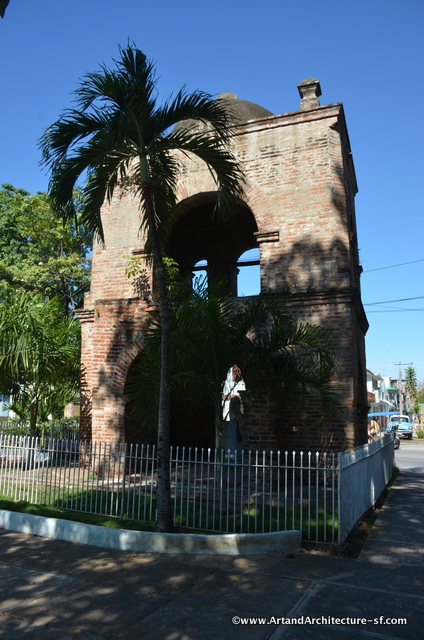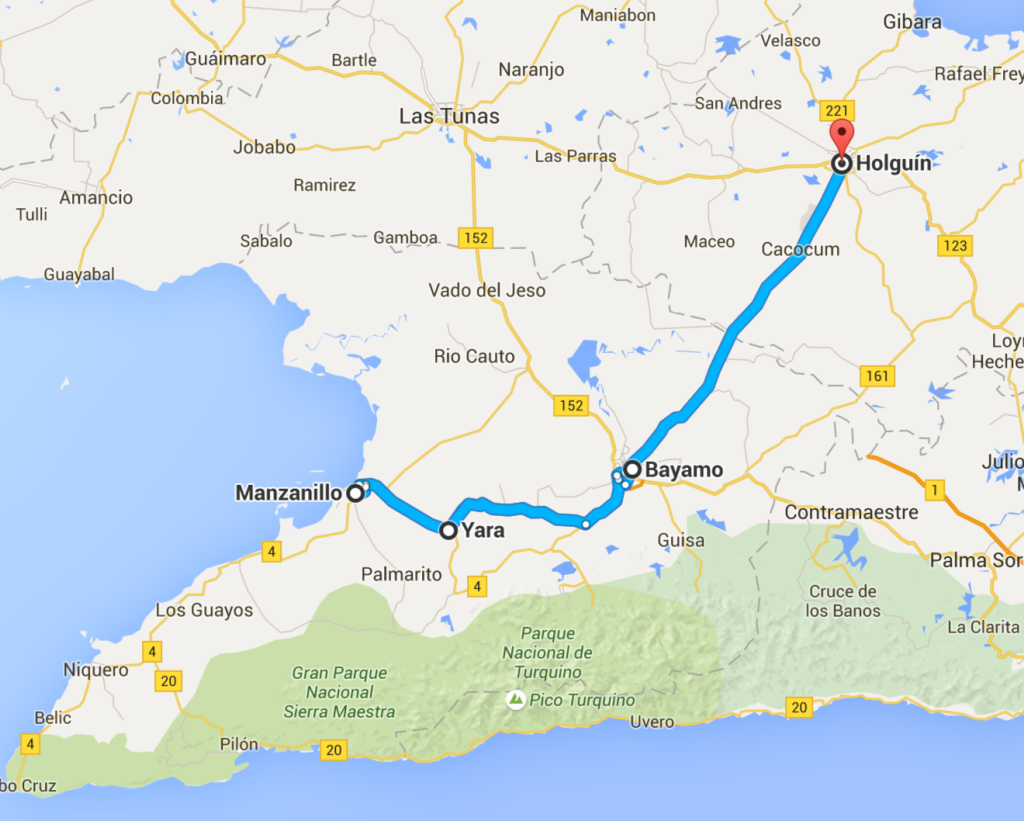October 2015
This trip goes from La Demajagua to Bayamo, the trail marks the beginning of the Cuban struggle for freedom from the Spanish. What is most striking to me is that it is farmland for mile after mile. After hours of driving through countryside without seeing anything but a few farm houses, crops and tractors, you get a true sense of how unpopulated Cuba is.
6 miles south of Manzanillo is La Demajagua, where the 1868 Cuban revolution from the Spaniards began.
La Demajagua was the home of Carlos Manuel Céspedes a landowner and lawyer. Céspedes purchased this sugar plantation in 1844. La Demajagua is the site of the Grito de Yara (Cry of Yara), (October 10, 1868) declaring Cuban independence, which began the Ten Years’ War. On that morning, having sounded the slave bell indicating that it was time for work, Céspedes announced to his slaves that they were all free men, and were invited to join him and his fellow conspirators in war against the Spanish government of Cuba. Céspedes is called Padre de la Patria (Father of the Country). In April 1869 he was chosen President of the Republic of Cuba in Arms.
The Spanish burned his sugar mill to the ground upon hearing of this revolt.
As you move east from La Demajagua you come to the the sleepy fishing town of Manzanillo, founded in 1784, it was the site of four battles during the Ten Year’s War. The town centers around Parque Céspedes, its central square.
In the center of the square sits “Glorieta Morisca” with its Arab-influenced brickwork. The bandstand was designed in the 1920s by Jose Martin del Castillo, an architect from Granada, Spain.

Some of the typical architecture of Manzanillo. It is important to understand that while the government keeps the buildings in the center of town in good shape, everything else in Cuba is falling down.
The town hall (the building to the right) once held Colonia Española, a social club for the Spanish, built in the early 1930s. Inside is the most glorious array of Andalusian tiles with a mural showing Christopher Columbus’ landing in Cuba.
We stayed in a wonderful Casa Particular in Manzanillo run by Luis de la Paz Acosta. It is at Mártires de Viet – Nam #169. It was clean and comfortable and 25 CUC’s a night, breakfast extra, which is usually about 5 CUCs. It was the owner of our Casa Particular that recommended our restaurant and we were NOT disappointed, it was fabulous, and very inexpensive.
After dinner I wondered the Malacon and found where our dinner had come from.
Our journey continued with a drive to Yara. Yara was actually part of Manzanillo until 1912, thus the Grito de Yara.
Yara is also the site of the burning of Hatuey. Hatuey is known as “Cuba’s First National Hero”.
Hatuey was originally from Hispaniola, he fled with many other natives to warn the people of Caobana of the treachery of the oncoming onslaught of the Spanish. Sadly the Caobanans did not believe him and few joined him in his fight against the Spanish. He was captured in February of 1512 and burned alive at the stake.
The story that every Cuban child learns is that before Hatuey was burned, a priest asked him if he would accept Jesus and go to heaven. Spanish historian Bartolomé Las Casas wrote of the reaction of the chief:
(Hatuey), thinking a little, asked the religious man if Spaniards went to heaven. The religious man answered yes… The chief then said without further thought that he did not want to go there but to hell so as not to be where they were and where he would not see such cruel people.
The last town on this revolution journey is Bayamo. On the 20th of October 1868 a group of intellectuals, including Céspedes declared this the capital of the Republic in Arms. In January, realizing that Bayamo was about to be recaptured by the Spanish, the people of the town burned their city down. This is why the song Bayamesa was later chosen as the national anthem of Cuba.
Bayamo is the second oldest town in Cuba (after Baracoa). The center square, Parque Céspedes, contains most every important building in town, including the Hotel Royalton.
Just to the side of Parque Céspedes is Plaza del Himno (Square of the Hymn). This name came about because La Bayamesa was first played in the church on this square. The song was written by Perucho Figuredo during the 1868 Battle of Bayamo. Figueredo took part in the battle. He put the words to a melody he had written the year before.
When the Cuban’s burned Bayamo to the ground they thought that they had placed the most valuable items in the church outside of town, alas, most everything was lost except this last remnant of the church.
The lyrics to Bayamesa in English: (translation via wikipedia)
Run to battle, men of Bayamo
The motherland looks proudly to you
Do not fear a glorious death.
Because to die for the motherland is to live.
To live in chains it’s to live
Mired in shame and disgrace
From the bugle hear the sound
Run, brave ones, to battle!
Fear not: the fierce Iberian
Are cowards as every tyrant
Do not resist the angry Cuban
Forever their empire fell
Free Cuba! Spain already died
Their power and pride, where did it go?
From the bugle hear the sound
Run, brave ones, to battle!
Behold our triumphant troops
Behold them that have fallen
As cowards they flee defeated
As braves, we knew how to triumph!
Free Cuba! We can shout
At the cannon’s terrible boom
From the bugle hear the sound
Run, brave ones, to battle!
The Hotel Royalton in Bayamo was full but they were kind enough to make a few phone calls and we ended up in two Casa Particulars just off the square for 25CUCs a night with breakfast for an additional 5CUCs.
On the outskirts of Holquín you will come across a park with this stunning statue. The artist is Santiagueron Alberto Lescay. Rosa La Bayamesa was a 36 year old daughter of slaves, a nurse and organizer of field hospitals during the Ten Years’ War.
A personal note about Manzanillo. There are so many places throughout Cuba that make me so terribly sad. Castro’s socialism has failed miserably and the country has suffered in so many ways, but I felt it to my bones in Manzanillo. Manzanillo is a sweet, charming, exquisite small seaside town, that should be bustling with commerce and tourists, but it is loosing its population and the buildings outside of the public square are crumbling as bad as those of Havana. If things do open up I can honestly see Manzanillo turning into a small tourist coastal town that the world knows and understands. While many may find that horrifying, the town needs an infusion of cash to keep it going, and the people of the area need to make a living.

